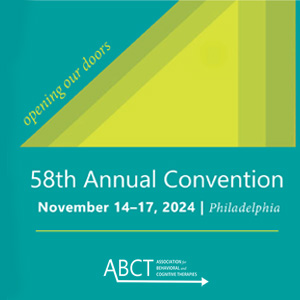Cognitive Science/ Cognitive Processes
Real-Time fMRI Reframe Neurofeedback in Healthy Participants
(PS4-89) Real-time Fmri Reframe Neurofeedback in Healthy Participants

Callan T. McKernan, None
Research Assistant
University of Michigan
Cincinnati, Ohio, United States- SH
Sophia Hovakimian, B.A.
Clinical Research Coordinator
University of Michigan
Ann Arbor, Michigan, United States - PE
Patrick Eagen, Other
Research Assistant
University of Michigan
Ann Arbor, Michigan, United States - RD
Rebecca Denenberg, Other
Research Assistant
University of Michigan
Ann Arbor, Michigan, United States - KT
Kathryn Torok, Other
Research Assistant
University of Michigan
Ann Arbor, Michigan, United States - KL
Krisanne Litinas, B.S., M.S.
Research Computer Specialist
University of Michigan
Ann Arbor, Michigan, United States - SP
Scott Peltier, Ph.D.
Technical Director, Research Scientist
University of Michigan
Ann Arbor, Michigan, United States 
David Marc Fresco, Ph.D.
Professor
University of Michigan
Ann Arbor, Michigan, United States- ST
Stephan Taylor, M.D.
Professor of Psychiatry
University of Michigan
Ann Arbor, Michigan, United States - SB
Stefanie Block, Ph.D.
Clinical Assistant Professor
University of Michigan
Ann Arbor, Michigan, United States
Author(s)
Co-Author(s)
Background: The goal of this study was to determine whether realtime functional MRI neurofeedback (NF) training enhances cognitive reappraisal (i.e., changing one’s view of something negative and in turn one’s emotional response) which reliably corresponds to activation of the dorsal medial (dmPFC) and ventral lateral (vlPFC) prefrontal cortices but may be underrecruited in patients with anxiety. As a first step, we report data from healthy participants. We expected NF-linked increases in dmPFC and vlPFC activation.
Methods: In this ongoing pilot study, 20 participants with no current or lifetime mental illnesses (aged 19-51, 53% women) completed the Emotion Regulation Task in the context of fMRI. During the task, participants viewed negative images from the International Affective Picture System and were instructed to either look at the image without altering their emotional response or reappraise the image. For example, a participant may see an upsetting situation and imagine the situation will improve in the future.
Participants underwent five runs, each with 9 alternating look and reappraise trials. The first (baseline) and final (transfer) run had no NF training. The middle three runs included vlPFC or dmPFC neurofeedback. After each image, participants saw either a crosshair (look trials) or a thermometer reflecting change in the targeted brain activity (reappraisal trials). For task development purposes the first 5 participants completed the task with no NF. Due to error in the neurofeedback script, 4 participants completed the task with inaccurate feedback from the dmPFC. Finally, 6 participants completed the task with accurate (as opposed to sham) dmPFC NF and 6 participants completed the task with accurate vlPFC NF.
First level modeling compared the contrast of reappraise > look. A 2x4 factorial ANOVA compared change in BOLD signal over time (transfer vs baseline) by group (no-NF, dmPFC-NF, vlPFC-NF, and inaccurate-NF).
Results: Fro pre-to-post training, participants receiving accurate dmPFC-NF demonstrated a non-significantly higher level of activation in both the dmPFC and vlPFC as compared to participants who received no NF, inaccurate NF, and accurate vlPFC.
Conclusion: Our results show that participants were more successful learning to increase their brain activity when receiving accurate feedback from the dmPFC, suggesting this target region may be more trainable with NF than the vlPFC. The results of this study show changing one’s view of a situation can alter mental activity, and future work will examine how change in brain activity from NF training relates to change in emotional responses. Next steps are to determine how best to add NF training to individuals with elevated anxiety as an adjunctive to treatment.

.png)
